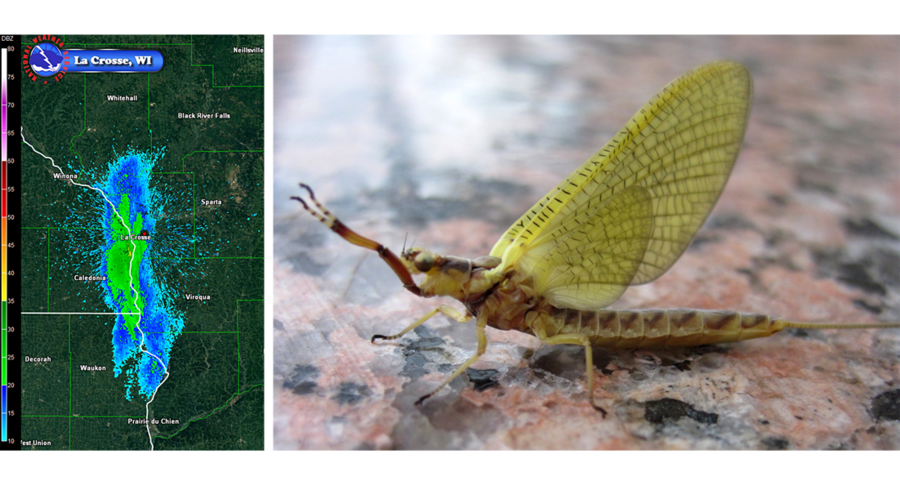Humongous swarm of mayflies captured on weather radar
Loading...
| Milwauke
Mayfly swarms are so huge that they show up on radar like thunderstorms.
Radar operated by the National Weather Service has detected a gigantic swarm of the ephemeral insects emerging from the Mississippi River between Wisconsin and Minnesota on Sunday, drifting north with the wind.
The flies, which have spent their first year after hatching buried in the sediment at the bottom of the river, appeared en masse for the final two days of their lives. They spend the first half of their terminal 48 hours lying around in big heaps. Then they shed their exoskeletons, mate, lay eggs, and die.
Unless they are crushed by cars, that is. Attracted by light, the mayflies tend to gather on roads and bridges in piles that can reach two feet. What's more, the females' eggs happen to contain an extremely slippery substance, as drivers in western Wisconsin discovered. In Trenton Township, a car slid on a road covered by the flies, crashed into a second car, and then struck a van, leaving two people injured.
After 24 hours, the remaining, un-crushed mayflies begin shedding their exoskeletons before taking to the air again to mate. The females then lay their eggs in water and die along with the males. Within hours of the adult flies' demise, their offspring hatch, and the cycle begins again.
"Almost every night in the summer, there's some sense on the radar that there's something coming off the river," said Dan Baumgardt, science and operations officer for the National Weather Service in La Crosse. "We don't know what kind of bug it is ... until we have people calling or saying, 'Oh my gosh, there's mayflies all in the La Crosse area.' "
The weather service typically records several swarms each year from June through August. Air and water temperatures have been usually cool this year, helping explain why Sunday's emergence was the first big one this summer, said Mark Steingraeber, a US Fish and Wildlife Service biologist.
In the 1920s, mayflies, which are highly sensitive to pollutants in rivers, disappeared from a 70-mile area south of the Twin Cities. They did not reappear in significant numbers again until 1978, when wastewater treatment and others actions taken under the Clean Water Act began to have an impact.
Material from the Associated Press was used in this report







